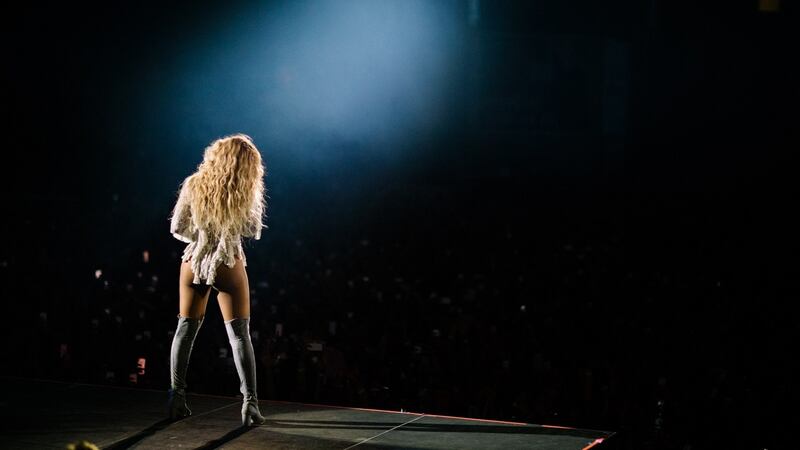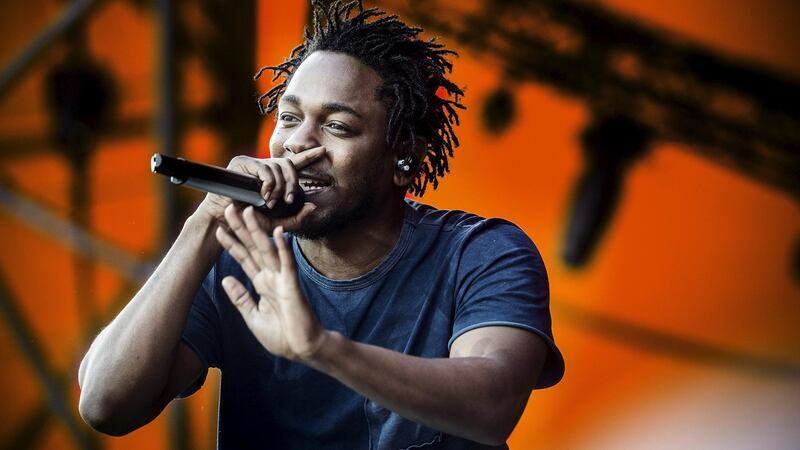It may be hard to determine what this decade was about straight away. Perspective doesn’t function so well up close, especially because so many of us missed the decade, staring at our phones. But as it draws to a close, and the frenetic energy gathers internally and externally, the closing moments of 2019 feel less like a conclusion than a precipice.
It is, as ever, artists who explain our intangible feelings to us, if not exactly show us the way. As revenue evaporated from the old-school industry and streaming giants took over, the machinery of major record labels looked increasingly creaky. Musicians had already taken over the means of production, and left to consider its purpose, the legacy industry of media conglomerates, A&R, PR, marketing, distribution and music media is somewhat sidelined and evolving.
We now exist in an music landscape where the dominance of a star is not typified by how omnipresent they are in media, but by their absence. The biggest artists rarely give interviews. Entire genres bubbled and diffused on Soundcloud and YouTube. Streaming data was gathered and organised by algorithms driven by moods. Everyone danced on TikTok. The frogspawn-like coagulation of phone screens continued to ruin concerts, setting audiences like jelly, too busy documenting to move. The gig economy no longer meant festivals. The festival economy increasingly meant brands.
Anohni anticipated the existential crisis that typified the second half of the 2010s by releasing Hopelessness
The music industry is not immune to broader social and economic patterns, and so the behemoths got bigger, the small fry struggled, and the middle was squeezed.
Tribal fandom
The cameras are front-facing in the music industry too, but while this introspection, narcissism, self-aggrandising, oversharing, constant documentation, performative empathy, tribal fandom, social media s***show that we call discourse and identity caused drama and storms in teacups, the disintegration of industry structure, fragmentation of media, growth of new distribution platforms and communities of niche fandom has also given rise to a peculiar and wonderful artistic burst. Facsimile bands and cookie cutter crooners were to a large extent found to be creatively irrelevant, and the weirdos came out to play.
The first year of the 2010s gave us the record of the decade, Kanye West’s My Beautiful Dark Twisted Fantasy (if you haven’t already listened to season two of the Dissect podcast which dives into the album over 16 episodes, then that’s your Christmas alone-time sorted). But as the years rolled by, maximalism gave way to chaos. Anohni anticipated the existential crisis that typified the second half of the 2010s, by releasing Hopelessness, one of the finest albums of the decade, in May 2016. It’s an album that begins with the lyric “drone bomb me”, a sentiment that doesn’t exactly let up.
In order to cut through the abundance of sound, the 2010s gave birth to a vibrant strain of creativity in music. The pursuit of experimentation, difference and exercises in individualism have invigorated the album as an art form, and those on the cutting edge of live music appear to be increasingly framing their concerts as theatre. On stage, Es Devlin’s influence looms large, but so too does the pursuit of the “event” and the “moment”, the lust for virility and relevance to “the culture”, to break the internet, just for one day.
In the last year and a half of this decade, I’ve found myself witnessing some of the most compelling, creatively complex, avant-garde and emotionally affecting gigs I’ve ever seen. There are no diminishing returns with art, but something is happening.
Live music
Naturally, artists have a lot to talk about right now. We are in a heightened political, social, technological and environmental atmosphere, flooded with the dizzying energy of end of decade jitters, end-stage capitalism, the rupturing and fracturing of societies and democracies, the hope, the despair, the racism, the feminism, the protests, the movements, the gender fluidity, the gentrification, the unity and the division.
The live music event of the decade was undoubtedly Beychella. But there’s also Bruce Springsteen and David Byrne re-contextualising their stories in actual theatres, Amanda Palmer – who has for sometime now been at the vanguard of what indie looks like in the 21st century – delivering three-and-a-half-hour shows, Kate Tempest asking people to put their phones down and immerse themselves in what she’s saying, Christine and the Queens creating not so much a gig as a dance piece, Stormzy hosting his own opening ceremony at Glastonbury, St Vincent revelling in block-colour beauty, Lorde suspended in a perspex box and Vince Staples embracing the minimalism of light and shadow.

There is a sense that artists at the forefront are fulfilling their creative desires on stage. It’s not just about production size or cost – although that plays a large role in fulfilling certain artists’ ambitions – it’s about the value of expression; half-show, half-feeling. For every Drake production with jaw-dropping Insta-baiting stage design, there’s the visceral collective sweat and scream of Idles.
Of course, many of the ensuing and evolving eccentricities and things designed to stand out – the face tattoos, the outrageous styling, and the magpie approaches to genre – then created their own sort of homogeny. Nostalgia, repetition, borrowing, and how quickly a sound surfaces and goes out of date has, in a cynical sense, forced pop artists to piggyback very quickly on hot production, but equally it allows for those with truly something to say or play to gain attention. Then as clubs closed and kids retreated to the glow of phones, the bedroom pop and downtempo hip-hop brought the speed of music sometimes to a crawling, drawling minimalism.
Guitar bands
The modern classics of Robyn, Jamie xx, Kendrick Lamar, Adele, Lizzo, Solange, Blood Orange, Janelle Monae coincided with the genre silos bursting, elevating Kamasi Washington, Rosalía and Lankum, alongside the quiet triumphs of Sharon Van Etten, Angel Olsen and Aldous Harding. Back home, just as we thought guitar bands were over, Fontaines DC, The Murder Capital and Pillow Queens came to the fore, even though the latter half of the decade will be remembered in Irish terms for the brilliant, burgeoning homegrown hip-hop that keeps striving and multiplying.

The trifecta of Beyoncé, Kanye and Kendrick are the artists of the decade. But as West concludes the 2010s asking the Father Ted question of whether there’s anything to be said for a Mass, and Taylor Swift’s battle to claw back her masters now feels like a relic from another age when Prince scrawled “slave” on his cheek, the dominance of artists with something to say, speaking to the broader culture about identity and personal experience, is to be celebrated.
The personal, political and creative have merged, often with beautiful consequences. So much has changed even in the mainstream where artistic and personal queerness, for example, is now often an asset, rather than a secret to be breached by tabloid prurience.
If Hopelessness anticipated the Brexit-Trump-Thunberg-hell-in-a-handbasket cycle, it’s a strange hope that bookends at least part of this moment. Kate Tempest’s late call this year, The Books Of Traps And Lessons, centres empathy amongst the malaise. “It’s coming to pass. My country’s coming apart. The whole thing is becoming such a bumbling farce. Was that a pivotal historical moment we just went stumbling past?,” begins the closing track, Lessons, and then, “Here we are, dancing in the rumbling dark. So, come a little closer. Give me something to grasp. Give me your beautiful, crumbling, heart.”
Entertainment is often typified by superficiality, but in the art of music, it’s love and truth that will guide us towards whatever happens next.















